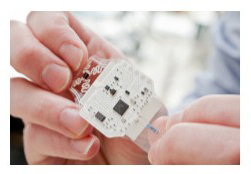MSc thesis project proposal
Design of analog building blocks for ultra-low-power biomedical circuits in 40nm CMOS
Project outside the university
Holst Centre / IMEC-nlDuring this master thesis project, the student will learn about designing in scaled technologies in general and will learn about analog design techniques for biomedical applications in general. Ideally the student can focus on design of instrumentation techniques and adapt this to different biomedical applications such as fNIRS measurements and biopotential measurements.
Assignment
During the first phase of the master thesis, the student will conduct a literature research to get him up to speed on the above aspects and get an overview of the field of biomedical analog design in scaled technologies. He will identify the core challenges and shortcomings of existing implementations.The student will then start the design phase, which will involve coming up with a novel circuit architecture and validating the concepts through simulation. Since design in scaled technologies is quite heavily influenced by layout, the student will need to learn how to bring layout dependent effects into the design flow early on by doing initial quick placement and parasitic estimation. Ideally the student will complete the full flow of literature survey, schematic entry, verification all the way up to layout and as such be able to contribute to a tapeout.
Requirements
Prerequisites: - Analog design knowledge - Basic understanding of Cadence Virtuoso schematic editor - Basic familiarity of Cadence Virtuoso Layout editorContact
prof.dr.ir. Wouter Serdijn
Bioelectronics Group
Department of Microelectronics
Last modified: 2018-03-10
